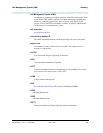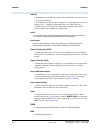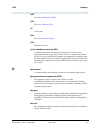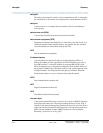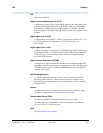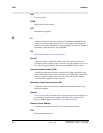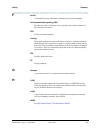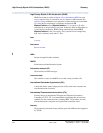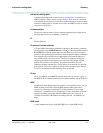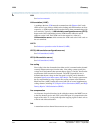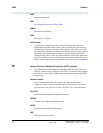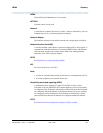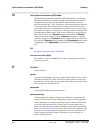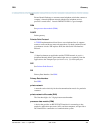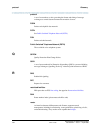
interserver routing table
477
Administration for Network Connectivity
555-233-504 — Issue 1 — April 2000 CID: 77730
Glossary
interserver routing table
A database that keeps track of the interserver routing tables on a multiserver
MMCX network. When a server sets up a Point-to-Point Protocol connection
with a remote server, the local server looks up the dialed-digit sequences in the
interserver routing table. (Calls that involve only one MMCX server are routed
using the dial-plan table.)
I/O base address
The place in memory where a given computer peripheral places and picks up
messages that travel over a computer’s system bus.
IP
Internet Protocol.
IP (Internet Protocol) address
A 32-bit number that uniquely identifies endpoints on the Internet, commonly
specified in the form
n1.n2.n3.n4
where each
n
n
is a decimal number between
0 and 255. Part of the IP address represents the address of a local network’s
gateway to the Internet and part represents the host-machine address within that
local network. The available bits are apportioned to the network address or
local address using a system of classes. The Class A addresses used by the
largest organizations on the Internet reserve the first 8 bits for the network
portion of the address and remaining 24 for the host machine. Class B
addresses, the most common class, assign 16 bits to the network and 16 to the
host machine. The Class C addresses used by small networks reserve the first
24 bits for the network and the remaining 8 bits for the host.
IP user
An H.323 endpoint on an MMCX network. Such users do not have log ins, so
the MMCX server identifies them using an extension number and an IP address.
ISDN
Integrated Services Digital Network, a digital, voice and data service. You get
ISDN in either of two forms. Primary Rate Interface (PRI) service has a
capacity of 1.544 mbps, divided into 23 or 29 B-channels (23 on a North
American T-1 connection, 29 on a European E-1) and 1 D-channel, each with a
capacity of 64 kbps. Basic Rate Interface (BRI) service has a capacity of
144 kbps, divided into 2 B-channels at 64 kbps each and 1 D-channel at 16
kbps.
ISDN trunk
A trunk administered for use with ISDN-PRI. Also called ISDN facility.



